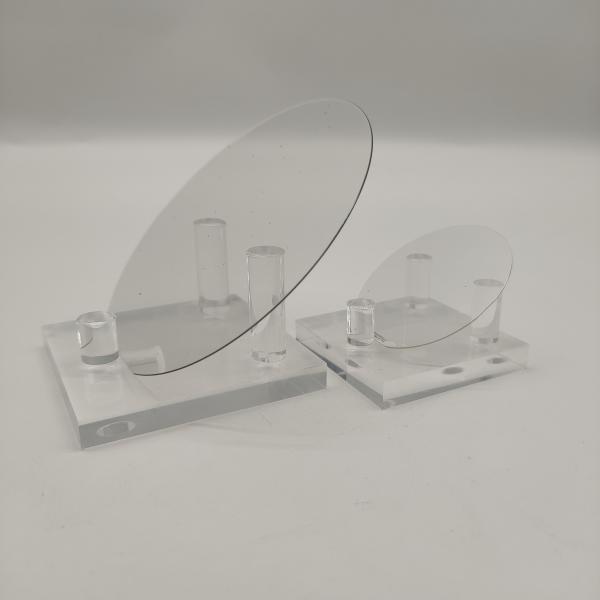
Gallium nitride (GaN), as a crucial wide-bandgap semiconductor material, is renowned for its exceptional electrical, thermal, and optical properties. It has found widespread use in high-power, high-frequency electronic devices, as well as optoelectronic devices. GaN epitaxy technology, a key step in device manufacturing, directly impacts the crystalline quality and performance of the material. This article explores the primary epitaxy methods, common substrates, and their applications in electronic and optoelectronic devices.
Major GaN Epitaxy Technologies
1. Metal-Organic Chemical Vapor Deposition (MOCVD)
MOCVD is the most commonly used GaN epitaxy technology, well-suited for large-scale production. In this process, GaN thin films are grown by reacting metal-organic precursors (such as trimethylgallium) with ammonia. MOCVD offers excellent process control and a high growth rate, making it ideal for manufacturing blue LEDs and other GaN-based power electronic devices.
2. Molecular Beam Epitaxy (MBE)
Molecular beam epitaxy is a high-precision technique that deposits GaN in an ultra-high vacuum environment using pure molecular or gas beams. While its growth rate is slower, MBE enables the formation of exceptionally high-quality crystals, making it suitable for high-performance devices that require minimal defect density.
3. Hydride Vapor Phase Epitaxy (HVPE)
HVPE is a technique mainly used for growing thick GaN films with a faster growth rate, often employed in the production of large GaN substrates. Though HVPE offers less precise control over thin film quality compared to MOCVD or MBE, it plays an important role in the large-scale manufacturing of GaN materials.

GaN Epitaxy Substrate Selection
The choice of substrate in GaN epitaxy is crucial due to the lattice mismatch and thermal expansion coefficient differences between GaN and common substrate materials, which significantly affect the quality of the epitaxial layer.
1. Sapphire
Sapphire is the most commonly used substrate for GaN epitaxy, particularly for LED production. Despite a significant lattice mismatch with GaN (~16%), the use of a low-temperature AlN buffer layer can mitigate this issue and improve the crystalline quality of the GaN layer.
2. Silicon (Si)
Silicon-based GaN epitaxy has gained attention in recent years due to the low cost and mature processing technology of silicon. However, the large lattice mismatch and thermal expansion coefficient differences between GaN and silicon can lead to cracks and stress in the epitaxial layer, requiring careful process control.
3. Silicon Carbide (SiC)
Silicon carbide has a closer lattice constant and thermal expansion coefficient to GaN, allowing for high-quality GaN epitaxial growth with lower defect density. GaN on SiC is widely used in high-power and high-frequency applications, such as power amplifiers and RF devices.
4. Free-Standing GaN Substrates
Free-standing GaN substrates minimize lattice mismatch and significantly reduce dislocation density in the epitaxial layer, leading to improved device performance. Although costly, this technology shows great promise for high-end power electronic devices.
Applications of GaN Epitaxy
1. High Electron Mobility Transistors (HEMTs)
GaN-based HEMTs are a typical application of GaN epitaxy, particularly suited for high-power and high-frequency domains. GaN's wide bandgap and high electron mobility allow HEMTs to perform exceptionally well in high-frequency and high-temperature environments, making them ideal for radar systems, 5G communications, and satellite communications.
2. Optoelectronic Devices
GaN epitaxy is fundamental to the production of blue and ultraviolet LEDs and laser diodes. High-quality GaN epitaxial layers significantly enhance the efficiency and stability of optoelectronic devices, which are widely used in displays, lighting, and high-speed data transmission.
3. Power Electronic Devices
GaN-based power devices, such as MOSFETs and Schottky diodes, offer superior efficiency and performance compared to traditional silicon devices. With its wide bandgap and high electron mobility, GaN enables higher current density and lower switching losses, making it an ideal material for efficient power converters.
Conclusion
GaN epitaxy technology, by precisely controlling the quality of the grown layers, directly influences the performance of electronic and optoelectronic devices. As MOCVD, MBE, and other epitaxy methods continue to evolve, and substrate technologies advance, GaN's applications in high-power, high-frequency, and optoelectronic fields will continue to expand. High-quality GaN epitaxy is not only driving the development of efficient, high-performance devices but also laying a solid foundation for the next generation of semiconductor technologies.
Related product links
As semiconductor technology advances, Gallium Nitride (GaN) has become a core material in optoelectronics, rad...
With the rapid advancement of third-generation semiconductor technologies, Silicon Carbide (SiC) has emerged a...
As third-generation semiconductor materials such as silicon carbide (SiC) and gallium nitride (GaN) continue t...
